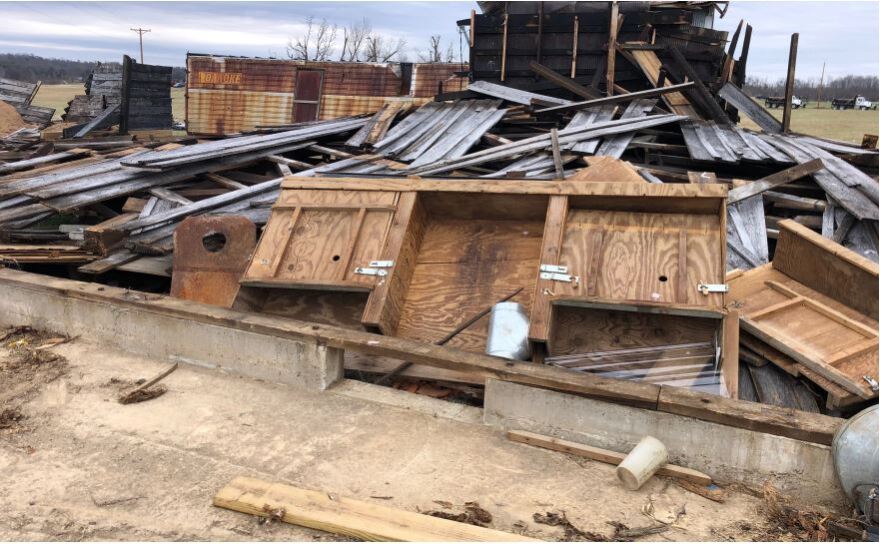What Happens if a University Burns Down? Exploring the Consequences and Recovery Process
Universities are crucial institutions that provide education, research opportunities, and foster intellectual growth. However, unforeseen disasters like fires can strike anywhere, including university campuses. In this article, we will delve into the potential consequences of a university fire and explore the subsequent recovery process. From academic disruptions to financial implications, understanding the impact of such an event is vital.
I. Immediate Consequences of a University Fire:
1. Loss of Infrastructure: A university fire can cause extensive damage to buildings, classrooms, libraries, laboratories, and other facilities. The loss of infrastructure not only affects the physical structure but also disrupts ongoing academic activities.

Loss of Infrastructure
2. Destruction of Educational Resources: Libraries and research centers are invaluable assets for universities. In the event of a fire, valuable books, research papers, and digital resources may be lost, hampering the academic community's access to essential knowledge.
3. Safety Concerns and Evacuation: The immediate priority during a university fire is the safety of students, faculty, and staff. Evacuation protocols and emergency response systems play a vital role in ensuring the well-being of everyone on campus.
II. Academic Disruptions:
1. Suspension of Classes: Following a university fire, classes may be temporarily suspended until alternative arrangements can be made. This interruption in academic activities can significantly impact students' progress and disrupt the continuity of education.
2. Relocation Challenges: Finding suitable alternative spaces to conduct classes and maintain academic operations can be a logistical challenge. Universities may need to explore options such as renting nearby facilities or utilizing other campuses to ensure minimal disruption.
3. Impact on Research Projects: Ongoing research projects, experiments, and valuable data stored in laboratories can be severely affected by a fire. The loss of research materials, equipment, and data can set back scientific advancements and hinder the progress of faculty and students alike.
III. Financial Implications:
1. Rebuilding and Renovation Costs: Recovering from a university fire involves substantial financial investments. Rebuilding damaged structures, renovating facilities, and replacing equipment require significant funding. Insurance coverage and fundraising efforts play a crucial role in financing these endeavors.
2. Potential Revenue Loss: Universities heavily rely on tuition fees, research grants, and other sources of revenue. A fire-related disruption can lead to a decline in student enrollment, loss of research funding, and postponed collaborations, resulting in financial strain.
IV. Emotional Impact and Psychological Support:
1. Trauma and Psychological Distress: The aftermath of a university fire can leave lasting psychological effects on students, faculty, and staff. Witnessing the destruction of familiar spaces and resources can cause trauma and distress. Providing adequate counseling services and mental health support becomes imperative during the recovery process.
2. Community Support and Resilience: Universities often foster a strong sense of community. During times of crisis, the solidarity and support from students, faculty, alumni, and the wider community can help the affected university rebuild and regain strength.

Community Support and Resilience
V. Recovery and Rebuilding:
1. Emergency Response and Investigation: Immediate actions involve assessing the extent of damage, investigating the cause of the fire, and enhancing safety protocols to prevent future incidents. Collaboration with fire departments, law enforcement agencies, and insurance providers is essential during this stage.
2. Temporary Facilities and Continuity of Education: Setting up temporary facilities, including classrooms and research spaces, is crucial for minimizing disruption. Universities may partner with other institutions or utilize portable structures while the damaged areas are being repaired.
3. Engaging Stakeholders: Rebuilding a university requires active engagement with various stakeholders, including students, faculty, staff, alumni, donors, and government entities. Their input, support, and contributions are instrumental in the recovery process.
VI. Conclusion:
A university fire can have far-reaching consequences, affecting infrastructure, academic activities, finances, and the emotional well-being of the community.
However, through effective emergency response, collaboration, and resilient efforts, universities can overcome such challenges. The recovery process presents an opportunity to rebuild stronger, implement improved safety measures, and foster a sense of unity within the academic community.